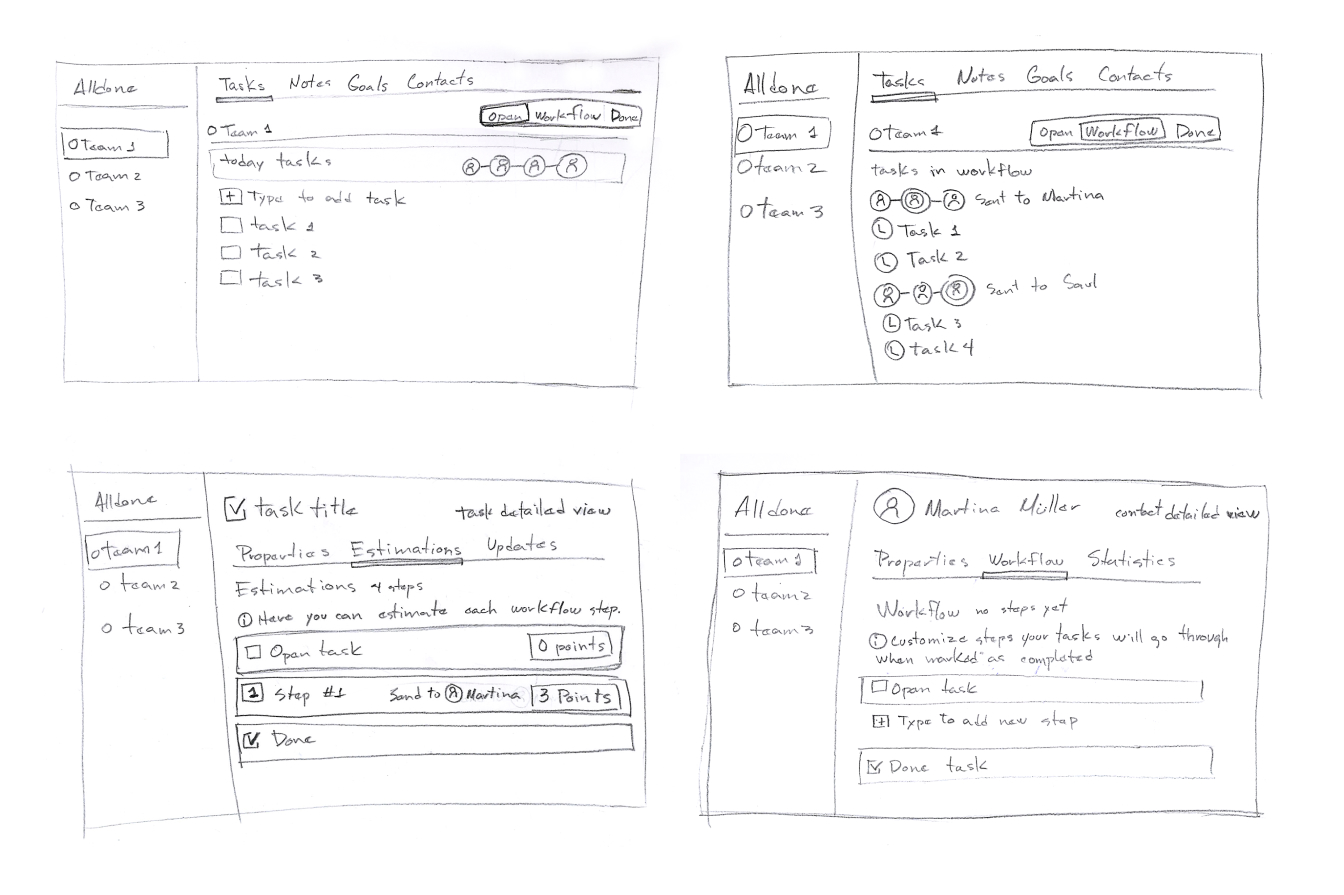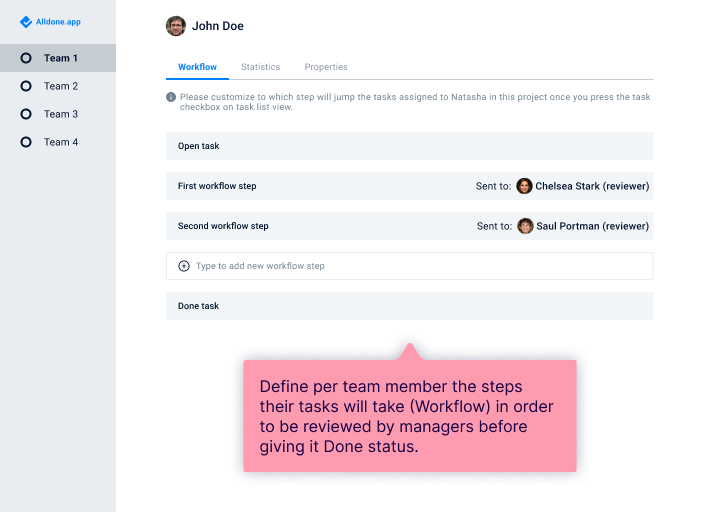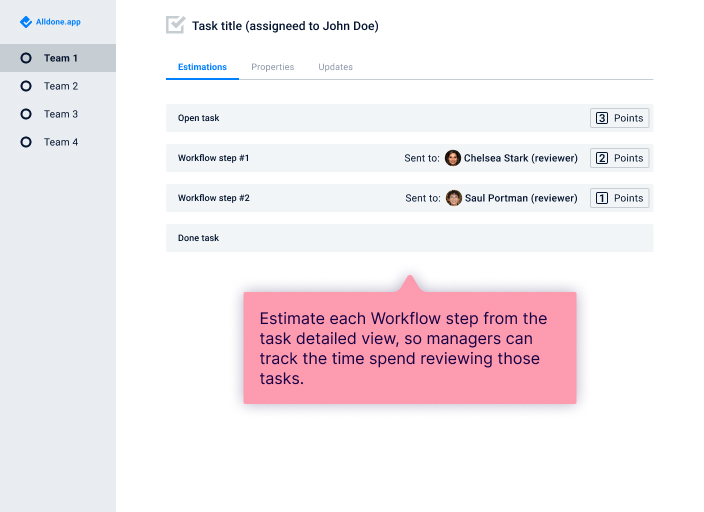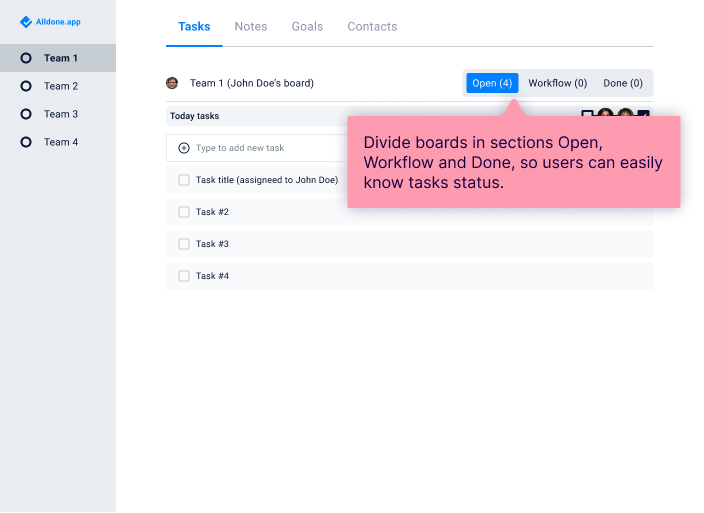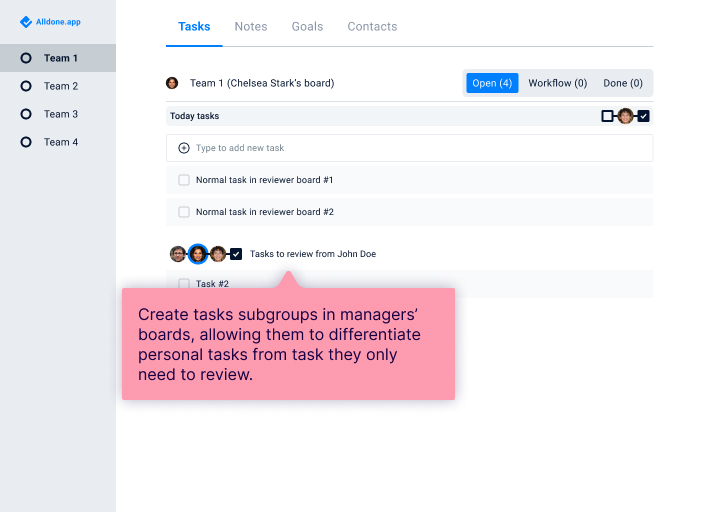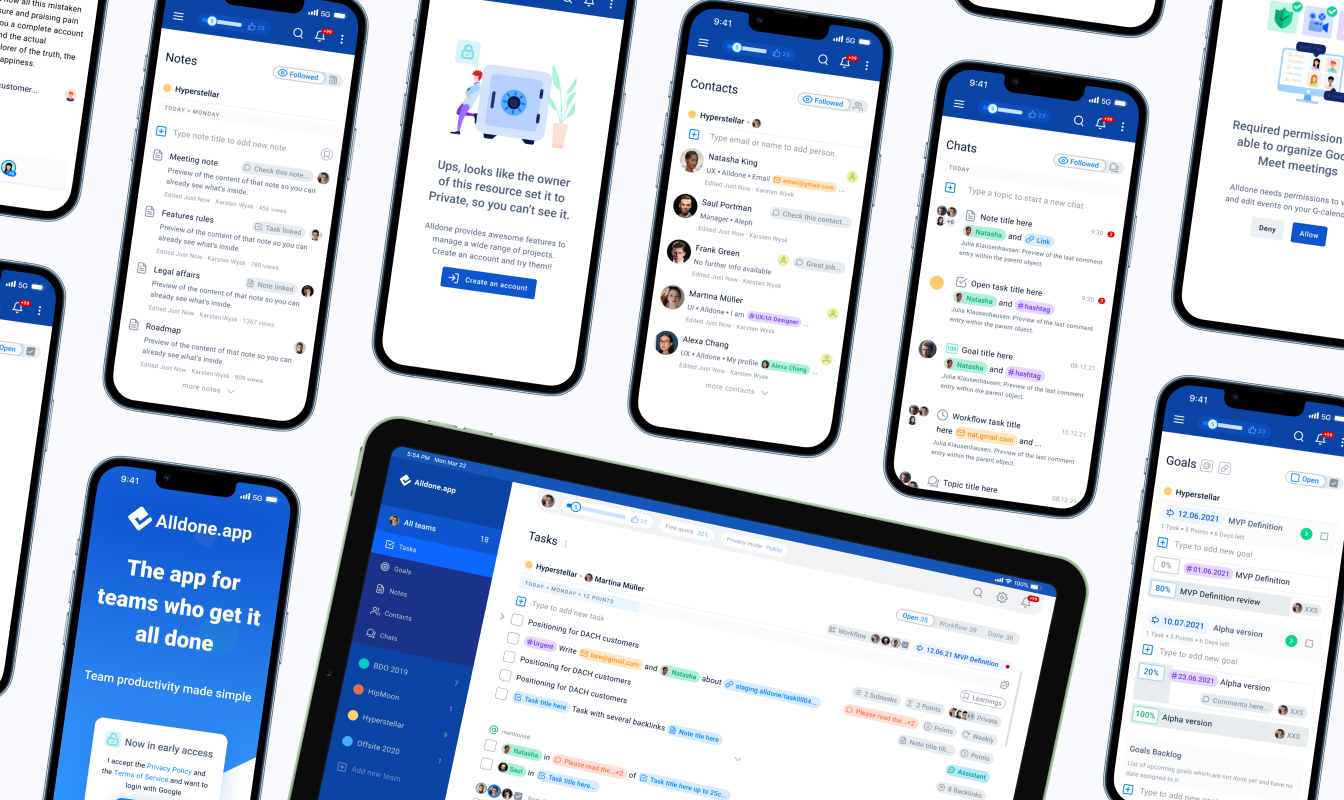
The product
A gamified and modern task management app for agile teams. This product is live already and has been used to manage its own development.
Responsibilities
I was creating and maintaining the Design System in Figma. Wireframing, Prototyping, Motion Design, and UI Design. The conception of new features from ideation to development and testing. Documenting features conception and Leading the team (Project Manager) was part of my tasks as well.
The problem
Alldone is an app to manage agile teams, but it was hard for managers to review and accepts tasks from other teams members. They had to go through each team member board and check them before moving those tasks to Done section. This user flow was very tiring and time-consuming.
The goal
Explore and design a feature to facilitate managers their daily tasks of reviewing other members tasks.
My role
Project Manager, leading a team of four developers and Product Designer, but being the only designer on the team I covered all the design roles.
Project duration
I have been working on this project from December 2019 till now.


